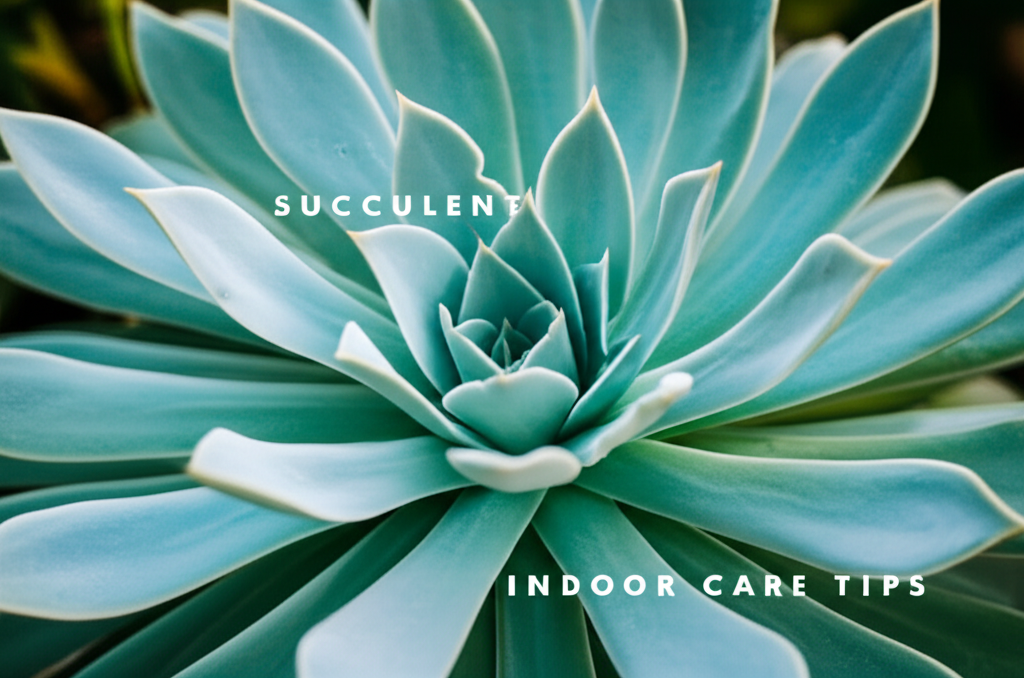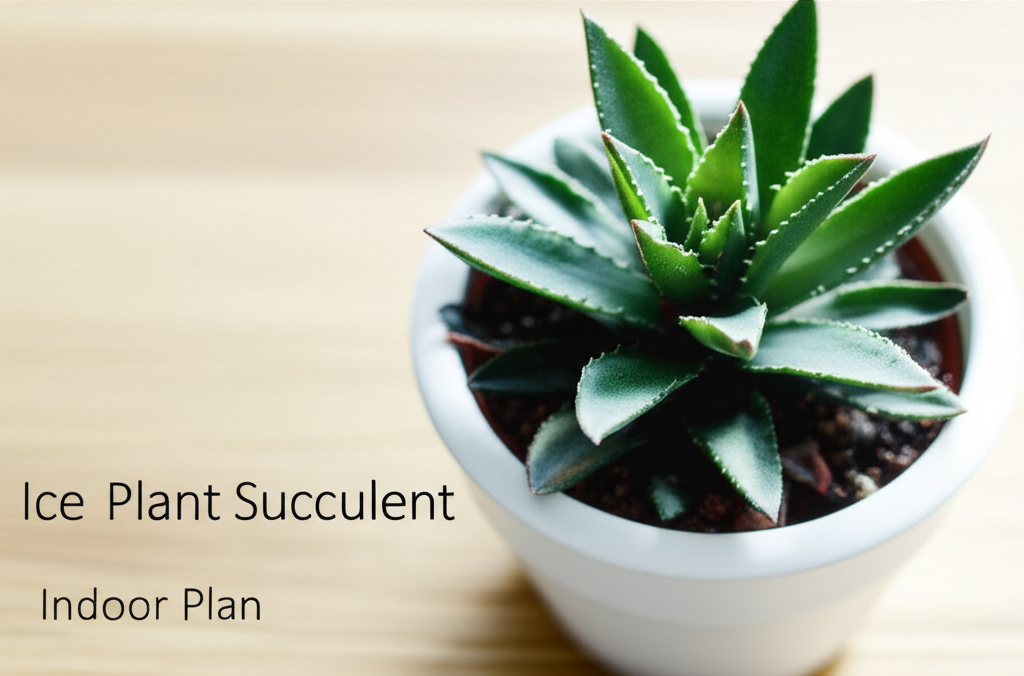Unveiling the Charm of Ice Plant Succulents Indoors
Ice plant succulents, scientifically known as members of the Aizoaceae family, are a fascinating group of plants celebrated for their diverse and often striking appearances. Many varieties mimic dew drops, pebbles, or even bits of ice, thanks to their unique leaf structures, which are often plump, translucent, and covered in papillae. While many species thrive in arid outdoor environments, several are perfectly suited for indoor cultivation, bringing a touch of the extraordinary to any home. Understanding their seasonal needs is paramount to ensuring these captivating succulents flourish year-round. This guide will delve into the essential aspects of indoor ice plant succulent care, broken down by season, to help you cultivate a thriving collection.
What Makes Ice Plant Succulents Unique?
The allure of ice plant succulents lies in their remarkable adaptations to dry climates. Their specialized leaves, often called “windows” or “fenestrations,” allow sunlight to penetrate deeper into the plant’s tissues, enabling photosynthesis even when only the tips are exposed to light. This clever mechanism helps them conserve water and survive harsh conditions. This same uniqueness, however, means they have specific requirements that differ from more common houseplants.
Common Indoor Ice Plant Succulent Varieties
While the term “ice plant” can encompass a vast array of succulents, a few are particularly popular for indoor growing:
- Lithops (Living Stones): Perhaps the most iconic, these succulents perfectly resemble small stones or pebbles, often with a fissure on top.
- Conophytum: Small, clump-forming succulents with rounded, paired leaves that can look like tiny dewdrops.
- Fenestraria: Known as “Baby Toes,” these have finger-like leaves with translucent tips.
- Titanopsis: Characterized by bumpy, wart-like growths on their leaves, giving them a unique texture.
Understanding the Seasonal Needs of Your Indoor Ice Plant Succulents

The key to successful indoor succulent care lies in mimicking their natural seasonal cycles as closely as possible. This means adjusting watering, light, and dormancy periods according to the time of year.
Spring: The Awakening and Growth Phase
As the days lengthen and temperatures begin to rise, ice plant succulents typically emerge from their winter dormancy. This is their primary growing season, and they will respond well to increased attention.
Light Requirements in Spring
Spring is the time to provide ample light. Most ice plant succulents require bright, indirect sunlight for at least 6-8 hours a day. A south-facing or east-facing window is often ideal. If your natural light is insufficient, consider using a grow light. Sudden exposure to intense direct sunlight can scorch their delicate leaves, so introduce them gradually if they’ve been in a shadier spot.
Watering Practices in Spring
Begin watering more frequently as the plant shows signs of active growth, such as plump leaves or new growth appearing from the fissure. The soil should be allowed to dry out completely between waterings. A good rule of thumb is to water thoroughly until water drains from the bottom of the pot, then wait until the soil is bone dry before watering again. Overwatering is the most common cause of rot in succulents.
Soil and Potting in Spring
Spring is also the opportune time for repotting if your ice plant succulent has outgrown its container or the soil has become compacted and lacks drainage. Use a gritty, well-draining potting mix specifically formulated for succulents or cacti. A mix of potting soil, perlite, and coarse sand (in roughly equal parts) works well. Ensure the pot has drainage holes.
Summer: Peak Growth and Hydration
Summer is when many ice plant succulents are actively growing and storing water. While they generally tolerate heat, extreme, prolonged temperatures can cause stress.
Light During Summer
Continue to provide plenty of bright, indirect light. In regions with very intense summer sun, you might need to provide some light shade during the hottest part of the afternoon to prevent leaf scorch. Observe your plants closely for any signs of stress, such as leaf discoloration or wilting.
Watering in Summer
Watering frequency will depend on the ambient temperature and humidity. Continue to water thoroughly when the soil is dry, but allow more time between waterings if the weather is very hot and dry, as the soil will dry out faster. However, never let the soil remain constantly wet. Some varieties, like Lithops, may enter a partial dormancy during extreme summer heat, requiring significantly reduced watering.
Fertilizing in Summer
If you choose to fertilize, do so sparingly during the peak growing season (spring and summer). Use a diluted, balanced liquid fertilizer (e.g., 10-10-10 or a succulent-specific fertilizer) at half or quarter strength once or twice during the summer months. Avoid fertilizing during their dormancy periods.
Autumn: Transition to Dormancy
As the days shorten and temperatures begin to cool, ice plant succulents will naturally slow their growth and prepare for their dormant period, which often occurs during winter.
Light Adjustments in Autumn
Continue providing as much bright light as possible. Even though growth is slowing, good light is still crucial for their health. Move plants closer to windows if necessary.
Watering as Growth Slows
Gradually reduce watering frequency as you notice a slowdown in growth. The soil should still be allowed to dry out completely between waterings, but the intervals between watering will naturally become longer. Overwatering now can be particularly detrimental as the plant is less able to utilize the moisture.
Pruning and Maintenance
This is a good time to remove any dead or damaged leaves. Inspect plants for pests and diseases.
Winter: Dormancy and Rest
Winter is typically the dormant period for most ice plant succulents. During this time, their growth is minimal, and they require significantly less water.
Light in Winter
Provide the brightest possible light. Even though they are dormant, light is still essential for their overall health. A south-facing window is ideal. If your home is very dark in winter, consider using grow lights for several hours a day.
Watering During Dormancy
This is the most critical aspect of winter care. Dormant ice plant succulents need very little water. In fact, many growers recommend abstaining from watering altogether during the coldest months, especially for species like Lithops that undergo a true winter dormancy. If you live in a very dry climate or notice the leaves becoming very shriveled, you can provide a very light watering, but ensure the soil dries out completely and quickly. The goal is to prevent the roots from shriveling completely while avoiding any risk of rot.
Temperature Considerations
Most ice plant succulents prefer cooler temperatures during their winter dormancy, ideally between 40-50°F (4-10°C). Avoid placing them near drafty windows or heat sources. If your home is consistently warm, focus on reducing watering even further.
Key Facts and Comparison of Seasonal Needs
Here’s a summary of the crucial care points throughout the year:
| Season | Light | Watering | Dormancy | Fertilizing |
|---|---|---|---|---|
| Spring | Bright, indirect (6-8+ hours) | When soil is dry; increasing frequency | Emerging from dormancy | Sparingly, if needed, diluted |
| Summer | Bright, indirect; potential light shade in extreme heat | When soil is dry; potentially less if very hot | Peak growth/possible partial dormancy | Sparingly, diluted (once or twice) |
| Autumn | Brightest possible | Reduced frequency; allow soil to dry completely | Transitioning to dormancy | None |
| Winter | Brightest possible | Very little to none; avoid wet soil | Full dormancy expected | None |
Common Issues and Troubleshooting
Even with the best care, problems can arise. Understanding common issues will help you address them quickly.
Overwatering: The Silent Killer
Symptoms: Yellowing leaves, mushy or translucent leaf bases, root rot (blackened, soft roots), fungal infections.
Cause: Consistently wet soil, poorly draining mix, infrequent watering to the point of waterlogging.
Solution: If caught early, repot the succulent in fresh, dry, well-draining soil. Remove any rotted roots. If the rot is extensive, the plant may not be salvageable. Water only when the soil is completely dry.
Underwatering: Signs of Thirst
Symptoms: Shriveling, deflating leaves, loss of plumpness, leaves becoming thin and papery.
Cause: Not enough water during the growing season, or prolonged periods without any water.
Solution: Water thoroughly until water drains from the pot. The leaves should plump up within a day or two. Ensure you are watering consistently during the active growth periods (spring and summer).
Pests: Unwelcome Visitors
Common pests include mealybugs, spider mites, and scale insects.
Symptoms: White cottony masses (mealybugs), fine webbing (spider mites), small brown or tan bumps on leaves and stems (scale).
Solution: Isolate the affected plant. For minor infestations, a cotton swab dipped in rubbing alcohol can be used to remove pests directly. For more severe infestations, use an insecticidal soap or neem oil, following product instructions carefully. Ensure good air circulation to deter pests.
Sunburn: Too Much of a Good Thing
Symptoms: Brown or white patches on the leaves, often on the side facing the strongest light.
Cause: Sudden exposure to intense direct sunlight, especially after being in a shadier location.
Solution: Move the plant to a location with bright, indirect light. Sunburn damage is permanent, but the plant will likely recover and produce new, undamaged growth.
Pros and Cons of Indoor Ice Plant Succulent Cultivation
| Pros | Cons |
|---|---|
| Unique Aesthetics: Their unusual forms add a striking architectural element to any collection. | Specific Care Needs: Their dormancy cycles and watering requirements can be tricky for beginners. |
| Low Maintenance (when conditions are right): Once their needs are met, they are relatively forgiving. | Susceptible to Overwatering: This is the most common cause of failure and requires careful attention. |
| Drought Tolerant: They can survive periods of neglect, especially during their dormant phases. | Light Sensitivity: Require ample bright light, which may necessitate grow lights in some environments. |
| Air Purification: Like many plants, they contribute to better indoor air quality. | Slow Growth: Some varieties grow very slowly, meaning it can take time to establish a significant collection. |
Tips for Success: Elevating Your Ice Plant Care
- Observe Your Plants: The best caregivers are those who pay close attention. Learn to read the subtle signs your ice plant succulents give you – their leaf texture, color, and shape can all indicate their needs.
- Embrace the Dryness: It is far better to underwater an ice plant succulent than to overwater it. Get comfortable with the soil staying dry for extended periods between waterings.
- Use the Right Potting Mix: Never use standard potting soil alone. The gritty, fast-draining mix is non-negotiable for preventing root rot.
- Provide Air Circulation: Good airflow helps to prevent fungal diseases and deter pests. Avoid overcrowding your plants.
- Research Specific Varieties: While this guide provides general care, different species within the Aizoaceae family may have slightly nuanced needs. A quick search for the specific type you own can offer invaluable insights.
Conclusion: Cultivating the Extraordinary
Caring for ice plant succulents indoors can be an incredibly rewarding experience. Their otherworldly beauty and fascinating adaptations make them a standout choice for any plant enthusiast. By understanding and respecting their seasonal cycles – particularly their need for a dry, cool dormancy in winter and ample light and careful watering in their growing seasons – you can successfully cultivate these living jewels. Embrace the challenge, observe your plants, and enjoy the unique charm that ice plant succulents bring to your home.


